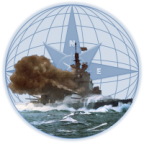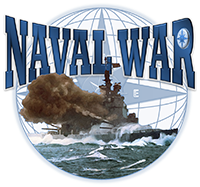- Posts: 70
- Thank you received: 18
- Home
- Forum
- The Drydock
- Rules Development
- Hidden deployment: smaller fleet disadvantage?
 Hidden deployment: smaller fleet disadvantage?
Hidden deployment: smaller fleet disadvantage?
habaya created the topic: Hidden deployment: smaller fleet disadvantage?
5 years 10 months ago
According to current rules, in battles containing hidden deployment, fleets consisting of fewer squadrons are at a disadvantage. Hidden tokens are proportional to the number of squadrons, which means the less squadrons you have the more easy your ships are discovered (there are less tokens for enemy scouts to check). I think it should be the other way around - smaller fleets should be more difficult to find. Even if that was not the case IRL (like bigger fleets might have better scouting ability), I think it still makes sense game-wise.
One possibility would be to reverse the proportion of hidden tokens: more squadrons=less hidden tokens. Another one is to make the number of hidden tokens even, so nobody gets an advantage. What do you think?
The following user(s) said Thank You: Naval War HQ
Please Log in or Create an account to join the conversation.
Naval War HQ replied the topic: Hidden deployment: smaller fleet disadvantage?
- Naval War HQ
-

- Offline
- Administrator
-

- Posts: 559
- Karma: 1
- Thank you received: 193
5 years 10 months ago
Game designer
"That which hath been is now; and that which is to be hath already been;" -Ecclesiastes-
You have a good point. I did think about it but didn't figure out a solution yet. Making the tokens even for both sounds like a promising angle. That should not be to hard to implement.... I'll look into it.
Game designer
"That which hath been is now; and that which is to be hath already been;" -Ecclesiastes-
Please Log in or Create an account to join the conversation.
habaya replied the topic: Hidden deployment: smaller fleet disadvantage?
5 years 10 months ago
I think searching hidden tokens should be a very important and exciting part of a battle so I've been thinking about it for some time. I was looking for the simplest system possible that integrates the following main principles:
A: smaller fleet should be harder to find in the battlefield
B: in a specific search area bigger squadrons should be easier to spot
In game terms the above means:
for A: more empty tokens on the game board for fleets that have less squadrons
for B: tokens denoting big squadrons need to be searched less times
Principle "A" comes naturally, principle "B" is there to prevent a player to hide all his ships into one big squadron under one token thus abusing the rules.
The solution I suggest is the following:
- Both players get 10 hidden tokens in total
- All tokens can be translated into one of the following: "empty", "normal squadron", "big squadron"
- Each squadron gets a token that will translate into a normal or a big squadron (depending on its size). The remaining tokens (up to a total of 10) will translate to empty tokens.
- Each empty and normal squadron token needs to be searched successfully TWICE before it is revealed. A big squadron token needs to be searched successfully only ONCE before it is revealed (remember big squadrons are easier to spot).
The question is how we determine which squadron is "big"? Well, this requires a one time calculation before the game starts. Each squadron is assigned a visibility value. Values can vary for optimal balance, but I suggest adding 1 for small, 2 for medium, 3 for large ships. All squadrons above 5 are considered big. So, for instance the visibility of a squadron of 3 destroyers is 3 (normal size), a squadron of 2 battleships is 6 (big size).
The above solution fulfills both principles "A" and "B". Also it does not complicate the game too much - only an extra calculation is needed per squadron once at the beginning of the game.
An example:
Fleet1:
SquadronX: 2 x carrier, 1 x destroyer -> big squadron, because visibility value is 3+3+1=7
SquadronY: 2 x destroyer -> normal squadron, because visibility value is 1+1=2
Additionally gets 8 tokens that translate to empty.
Fleet2:
SquadronU: 1 x carrier, 1 x heavy cruiser -> normal squadron, because visibility value is 3+2=5
SquadronV: 1 x carrier, 1 x destroyer -> normal squadron, because visibility value is 3+1=4
SquadronZ: 2 x destroyer -> normal squadron, because visibility value is 1+1=2
Additionally gets 7 tokens that translate to empty.
As seen fron the example, both fleets are similar in size, but Fleet1 is slightly harder to find (more tokens need to be searched to find a squadron), but SquadronX is easier to spot when searched (when its token is searched successfully it is revealed immediately).
I tested this in Carrier Clash scenario and it worked well.
What is your opinion?
Last edit: 5 years 10 months ago by habaya.
Please Log in or Create an account to join the conversation.
